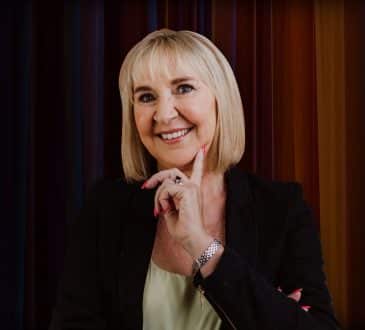Did COVID-19 Destroy Your Marketing Plan? Avoid a Repeat with Agile

I was talking with one of my clients back in March, and he was telling me how they were adapting to changes in their business from the COVID-19 pandemic and related economic effects. One thing struck me in what he said: he was glad they hadn’t completed an annual marketing plan because all that planning, and any subsequent investments, would have been blown up.
Today, most organizations have adjusted, for better or worse, to the initial effects of the pandemic. But what’s next? As I write this, we’re starting to see a resurgence in COVID-19 cases, both in the United States and in Europe. The stock market has declined for four straight weeks due to uncertainty about the future economy. Fires, hurricanes, and civil unrest have impacted many people and many businesses.
We don’t know what the future holds, but we can prepare for it. Here are five specific suggestions on how to avoid having your marketing plan knocked down, and with it, your business.
Always Be Planning
Forget annual marketing plans. They take too much work, and a month or two later—when the next pandemic, downturn, or natural disaster strikes—they’re irrelevant. Instead, plan no more than a month or quarter ahead.
“Always be planning” is an organizational skill, and those organizations that hone this skill will be better prepared for whatever the future holds.
Should you have strategies that will take longer than a month or quarter to execute? Of course. But be prepared to change them when necessary and build your strategy execution plans on shorter timeframes.
Always Be Budgeting
CFOs and accountants love annual budgets. But let’s face it: if your revenue drops dramatically, CFOs and accountants will lead the charge to cut your budget. Be prepared for both revenue drops and new opportunities by learning how to run your organization with monthly or quarterly budgets.
“Always be budgeting” is another organizational skill that will help you prepare for the unknown.
Always Be Testing
In addition to forgoing annual marketing plans, my client mentioned that rather than placing large media buys, they were making smaller buys, testing their messages and placements, and then adjusting. This was helpful when COVID-19 hit because they didn’t have long-term commitments, and they could dial down their spending quickly. It also meant they could rapidly test new products they introduced as a result of the pandemic.
There’s another benefit to continuous testing: you’ll make better decisions. These decisions will be based on data and feedback from the market rather than someone’s opinion.
Adjust to the New Normal
Even prior to the pandemic, marketers were scrambling to adjust to shifts in the business environment: the shift to digital, the impact of technology, and the shift in power to the buyer. The pandemic has accelerated these changes and introduced new ones. We’re not going back. More people will work from home. More meetings will be virtual rather than in person. More people will shop online. In short, we’re in for a new normal.
Organizations must adjust to this new normal. What do these changes mean for your business? What new opportunities do they present? What new threats? Adjust to this new normal not through a new plan, but with a series of small changes. Test each one. And adapt.
Create a Marketing Disaster Preparedness Team and Plan
Just as your company has a plan for a natural disaster, like a hurricane or earthquake, your brand must have a plan for brand-damaging events and unexpected challenges like worldwide downturns from a virus.
Form a marketing disaster preparedness team, and make sure they have all the skill sets necessary to respond. Establish expectations for how the team will operate and call up processes before disaster strikes. And perhaps most importantly, decide in advance how decisions will be made.
This team can also be an opportunity preparedness team. How did Zoom grow so fast compared to its competitors when we all needed to move to virtual meetings? How did Teledoc take off during the pandemic? Planning for the unexpected can be a boon to your business.
Advice by Another Name
Does some of this advice sound familiar? If it does, you may be practicing Agile in your marketing practice. These practices, and many others, are at the heart of Agile. Agile is built to handle the unexpected.
Skeptics may argue that Agile is just another trend, or worse, a restrictive approach that works for software development but never for marketing. But Agile isn’t about management techniques like Scrum or Kanban. Sure, these processes help, but Agile marketing pushes teams further with practices that will help you manage the next pandemic or disaster.
Have you read?
Best Places to Visit in Central And South America.
Most Beautiful National Parks in Canada.
Best Honeymoon Resorts In Croatia.
Best Honeymoon Destinations in Kenya
Bring the best of the CEOWORLD magazine's global journalism to audiences in the United States and around the world. - Add CEOWORLD magazine to your Google News feed.
Follow CEOWORLD magazine headlines on: Google News, LinkedIn, Twitter, and Facebook.
Copyright 2025 The CEOWORLD magazine. All rights reserved. This material (and any extract from it) must not be copied, redistributed or placed on any website, without CEOWORLD magazine' prior written consent. For media queries, please contact: info@ceoworld.biz












